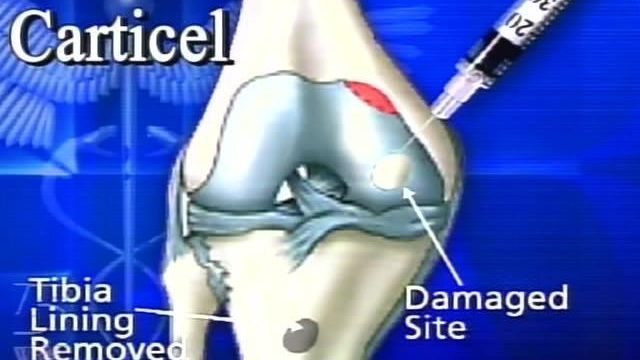Health Team
Stem Cells May Be Answer to Replacing Damaged Cartilage
Orthopaedic researchers at Duke Hospitals are testing a way of creating strong new cartilage from adult stem cells.
Posted — UpdatedDURHAM, N.C. — Many people out-live their joints either from injury or arthritis. Some of those people turn to artificial joint replacement surgery, but depending on how long you live, those artificial joints may need to be replaced.
A weaving machine in a Duke research laboratory uses polycarprolactone (PCL) fibers, which are bio-degradable, bio-resorbable fiber, with tiny threads commonly used to stitch up wounds and creates a fabric scaffold.
"We can then take this 3-dimensionally woven scaffold, infiltrate it with cells and mold it," said Duke graduate student Frank Moutos, who designed and built the machine.
Adult stem cells fill the structure. They are combined with other chemicals, which turn them into cartilage or bone cells.
"In some cases, we want both. We want a layer of cartilage on a layer of bone to replace your joint, for example," said Dr. Farshid Guilak, director of Duke Orthopaedic Research.
A current procedure called Carticel gets cells from a patient's own knee joint cartilage. Over several months, the cells multiply in a lab. A second surgery implants the cells in a sealed pocket where damaged cartilage was removed. Over several months, the cells begin to gel and harden.
A more common option is full joint replacement with plastic and metal parts. The fabric scaffold also replaces an entire joint surface but with real cartilage. Researchers said the stem cells that make it all happen come from the patient's own body fat.
"This eliminates any problems of disease transmission or rejection of the cells," Guilak said.
The fabric only lasts until the new cartilage cells take over.
"The fibers start to weaken and degrade away and then eventually, they'd completely be gone," Moutos said.
Officials said if the three-dimensional fabric scaffold the machine produces works in animal trials, it could be used to replace damaged cartilage in humans. It could be three to four years before the procedure is used in human trials.
• Credits
Copyright 2024 by Capitol Broadcasting Company. All rights reserved. This material may not be published, broadcast, rewritten or redistributed.





